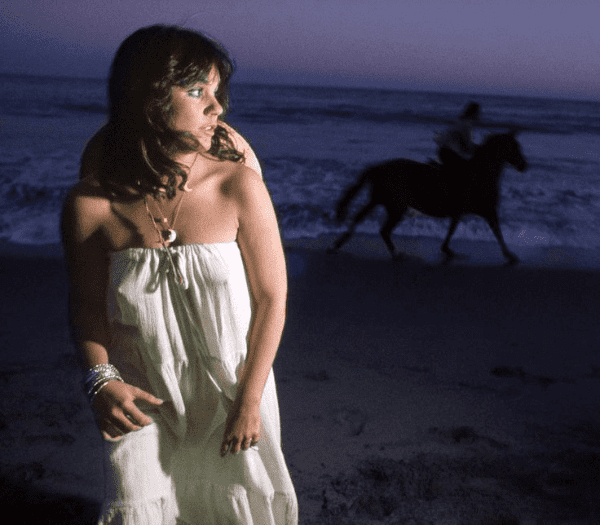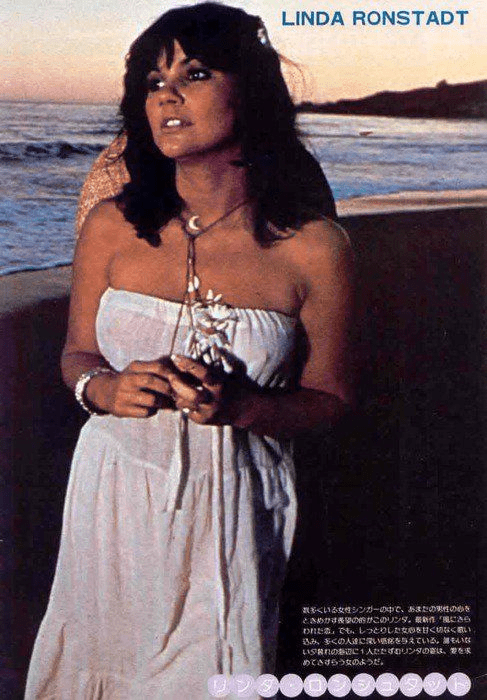
Few artists in music history have managed to transcend genres and redefine what it means to be a vocalist like Linda Ronstadt. With a career spanning over four decades, she has left an undeniable mark on rock, country, pop, folk, and Latin music. Her ability to interpret songs with raw emotion, technical precision, and an unmatched vocal range has earned her the title of one of the greatest female vocalists of all time.
From her early days as a country-rock pioneer to becoming an international sensation, Ronstadt has continually evolved, proving that true artistry knows no boundaries. Her story is not just about music—it is about breaking barriers, staying true to one’s craft, and leaving a legacy that continues to inspire generations.

Early Life and Musical Beginnings
Linda Maria Ronstadt was born on July 15, 1946, in Tucson, Arizona. Raised in a musical family, she was exposed to a wide variety of sounds from an early age. Her father, Gilbert Ronstadt, was a businessman who also had a deep love for traditional Mexican music, while her mother, Ruth Mary Copeman Ronstadt, introduced her to classical and pop standards.
By the time she was a teenager, Ronstadt was already performing with her siblings, blending folk, country, and rock influences into her unique style. Her natural talent was undeniable, and she soon set her sights on Los Angeles, where the 1960s music scene was bursting with opportunities for young, ambitious artists.
Video: Linda Ronstadt Left Nothing To The Imagination, Try Not To Gasp
The Rise to Fame with The Stone Poneys
Ronstadt’s first taste of mainstream success came as part of The Stone Poneys, a folk-rock trio she formed with Bobby Kimmel and Kenny Edwards. The band’s 1967 hit, “Different Drum,” written by Michael Nesmith of The Monkees, became a breakthrough moment for Ronstadt. Her distinct, clear vocals made the song an instant classic, proving that she had the ability to carry a song with effortless power and emotion.
Though The Stone Poneys disbanded shortly after their success, Ronstadt’s solo career was just beginning. She quickly established herself as a versatile artist, one who could move fluidly between different musical styles while maintaining a signature sound that audiences adored.
Dominating the 1970s: The Queen of Rock

By the early 1970s, Ronstadt had fully transitioned into a solo artist, blending country, rock, and folk influences to create a sound that was uniquely her own. Her breakout moment came with the 1974 album Heart Like a Wheel, which contained the hit singles “You’re No Good,” “When Will I Be Loved,” and “It Doesn’t Matter Anymore.”
The album reached No. 1 on the Billboard charts, marking the beginning of her reign as the first female rock superstar. Over the next decade, she continued to release multi-platinum albums, including:
- “Simple Dreams” (1977) – Featuring the smash hits “Blue Bayou” and “It’s So Easy”, this album solidified Ronstadt as a household name.
- “Living in the USA” (1978) – One of the first albums by a female artist to ship over two million copies.
- “Mad Love” (1980) – Showcasing her ability to adapt to new wave rock, proving her endless versatility.
Throughout the 1970s, Ronstadt became a fixture on the covers of Rolling Stone, Time, and Newsweek, earning her place as one of the most influential artists of the decade. She had successfully merged mainstream appeal with artistic credibility, something few musicians could achieve.

Breaking Genre Barriers in the 1980s
As the 1980s arrived, Ronstadt refused to stay in a single musical box. She took bold risks, moving away from rock and embracing new artistic challenges.
She surprised the music world by starring in Gilbert and Sullivan’s The Pirates of Penzance on Broadway, proving she had the range to excel in operatic performances. She also ventured into big-band jazz and pop standards, recording three albums of classic American songs with legendary arranger Nelson Riddle:
- “What’s New” (1983)
- “Lush Life” (1984)
- “For Sentimental Reasons” (1986)
These albums introduced a new generation to timeless standards, and Ronstadt’s immaculate phrasing and vocal delivery impressed even the harshest critics.
Reconnecting with Her Roots: The Spanish-Language Success
One of the most defining moments of Ronstadt’s career came in 1987, when she honored her Mexican heritage with the Spanish-language album Canciones de Mi Padre. The album featured traditional Mariachi music, a style she had grown up listening to.

Many in the industry were skeptical about a Spanish-language album’s success, but Ronstadt proved them wrong. Canciones de Mi Padre became the best-selling non-English album in American music history, selling over two million copies and winning her a Grammy Award.
She followed this success with two more Spanish-language albums:
- “Mas Canciones” (1991)
- “Frenesi” (1992)
These records showcased her deep appreciation for Latin music, further proving that Ronstadt was a musical chameleon, capable of excelling in any genre.
Video: Linda Ronstadt “You’re No Good” Live 1976 (Reelin’ In The Years Archives)
Facing Challenges and Retiring from Music
Despite her ongoing success, Ronstadt’s career was forced into an early retirement due to health struggles. In 2013, she revealed that she had been diagnosed with Parkinson’s disease, which later was reclassified as progressive supranuclear palsy—a rare condition affecting movement and vocal control.
The disease took away her ability to sing, a heartbreaking reality for someone whose voice had defined an era. Yet, true to her resilient spirit, Ronstadt continued to engage with fans through writing, interviews, and activism.
In 2019, she released her memoir, Simple Dreams, offering an intimate look at her life, music, and personal journey. She also participated in the documentary Linda Ronstadt: The Sound of My Voice, which won critical acclaim for its poignant storytelling and celebration of her legacy.
The Lasting Legacy of Linda Ronstadt
Linda Ronstadt is not just a music legend—she is a trailblazer who reshaped the industry. Her ability to reinvent herself across genres set a precedent for artists who refuse to be confined by labels.

Her contributions have been recognized with countless awards, including:
- 11 Grammy Awards
- A Kennedy Center Honor
- An induction into the Rock and Roll Hall of Fame (2014)
- The Latin Grammy Lifetime Achievement Award
Though she no longer performs, her influence continues to resonate in modern music. Artists such as Dolly Parton, Emmylou Harris, Sheryl Crow, and Brandi Carlile have all credited Ronstadt as a key inspiration in their careers.
Conclusion: An Icon Who Transcends Time
Linda Ronstadt’s career is a testament to musical excellence, artistic courage, and unwavering authenticity. She paved the way for female artists in rock, redefined genre limitations, and brought depth and emotion to every song she touched.
Even in retirement, her legacy thrives, as her music continues to reach new generations. Whether it’s rock, country, folk, jazz, or Latin, Linda Ronstadt’s voice will always be a beacon of timeless artistry—a voice that remains, even in silence, truly unforgettable.
Here are some great photos of her:








